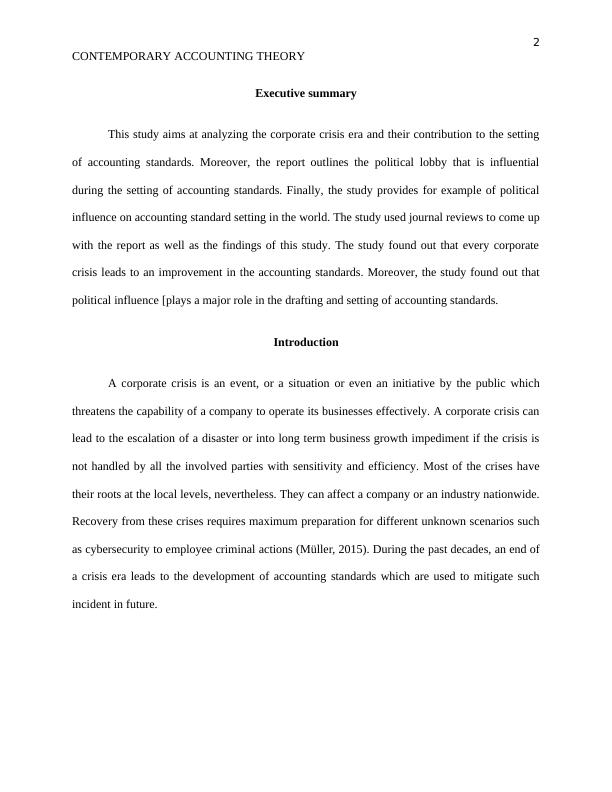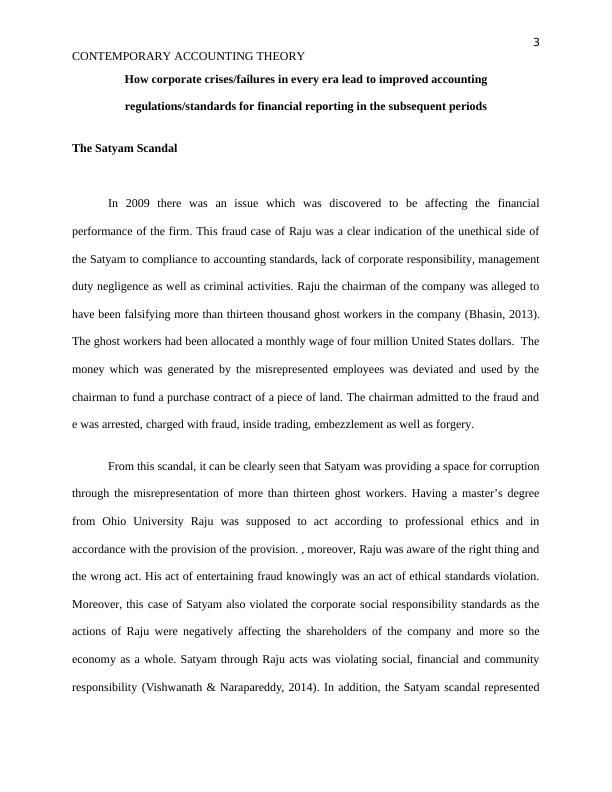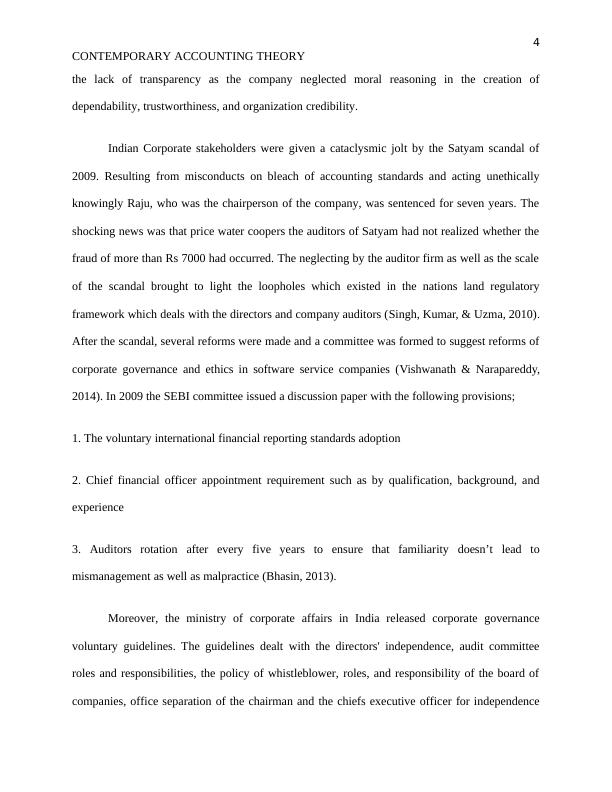Contemporary Accounting Theory
Undertake a review of literature to develop and present arguments on how corporate crises/failures lead to improved accounting regulations/standards. Critically evaluate the complex political process of accounting standard setting in the past.
13 Pages3801 Words82 Views
Added on 2023-01-16
About This Document
This study analyzes the impact of corporate crises on accounting standards and the role of political influence in setting accounting standards. It provides examples of how corporate scandals have led to improvements in accounting regulations. The study also discusses the lobbies and influences in the accounting standard-setting process.
Contemporary Accounting Theory
Undertake a review of literature to develop and present arguments on how corporate crises/failures lead to improved accounting regulations/standards. Critically evaluate the complex political process of accounting standard setting in the past.
Added on 2023-01-16
ShareRelated Documents
End of preview
Want to access all the pages? Upload your documents or become a member.
Contemporary Accounting Theory
|13
|3625
|2
Contemporary Accounting Theory
|8
|1703
|72
Explanation of how corporate crises/failures lead to improved accounting regulations/standards
|5
|1360
|97
Corporate Failures and Accounting Standards
|11
|3272
|47
Accounting Theory & Contemporary Issues: PDF
|13
|3497
|27




